Propain Tyee
Wheel Size: 27.5’’ (XS, S, M); 27.5’’ front / 29 rear’’ (M, L, XL) or 29’’ (M, L, XL)
Travel: 160 mm rear / 160 or 170 mm front
Geometry highlights:
- Sizes offered: XS, S, M, L, XL
- Headtube angle: 63º – 64.5º
- Seat tube angle: 76.2º – 77.9º
- Reach: 480 mm (size Large)
- Chainstay length: 430 mm (27.5’’ version); 445 mm (29’’ / MX version)
Frame material: Carbon Fiber and Aluminum versions available
Price: Complete bikes: $3,599 – $8,244
Blister’s Measured Weight (size L, as built): 34.2 lb / 15.5 kg
Test Locations: Washington
Reviewer: David Golay: 6’, 170 lbs / 183 cm, 77.1 kg
Test Duration: 4 months
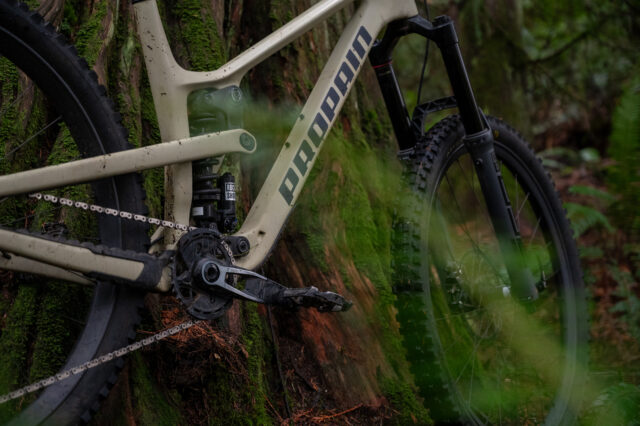
Intro
The current Tyee has been around since 2020 and was due for a refresh. Propane claims a ground-up redesign that incorporates the usual longer, slacker geometry evolution, but also some notable changes to suspension kinematics and frame construction — and the addition of headset cable routing, among other tweaks.
The Frame
The Tyee frame continues to be offered in aluminum and carbon versions, both of which utilize a blend of either different carbon materials or aluminum alloys. Propane states that the blended approach to the frame materials results in improved ride characteristics, weight, and durability. Speaking of weight, they’ve gained a bit in the redesign — according to Propain, that extra weight translates to a 10% stiffer rear end with more tire clearance and an increase in lateral stiffness in the front triangle. In addition to aluminum and carbon versions, there will also be unique dedicated 27.5’’ frames for sizes Extra Small through Medium, with the XS and the S only offered in 27.5’’. Mediums will be available in both dedicated 27.5’’ and 29’’ versions. All frames will have a flip chip, which on the bikes designed for a 29’’ front wheel also allows running a 27.5’’ rear one in lieu of the full 29’’ setup; on 27.5’’ bikes (sizes XS, Small, and as an option on the Medium) use it for geometry adjustment only.
Suspension duties once again go to Propain’s PRO10 system, with its newly designed dual counter-rotating links providing 160 mm of travel. Anti-squat at sag is stated at 113%, coupled with a progressive shock rate (it has decreased progressivity at the lower end), which is said to play well with both coil and air shocks.
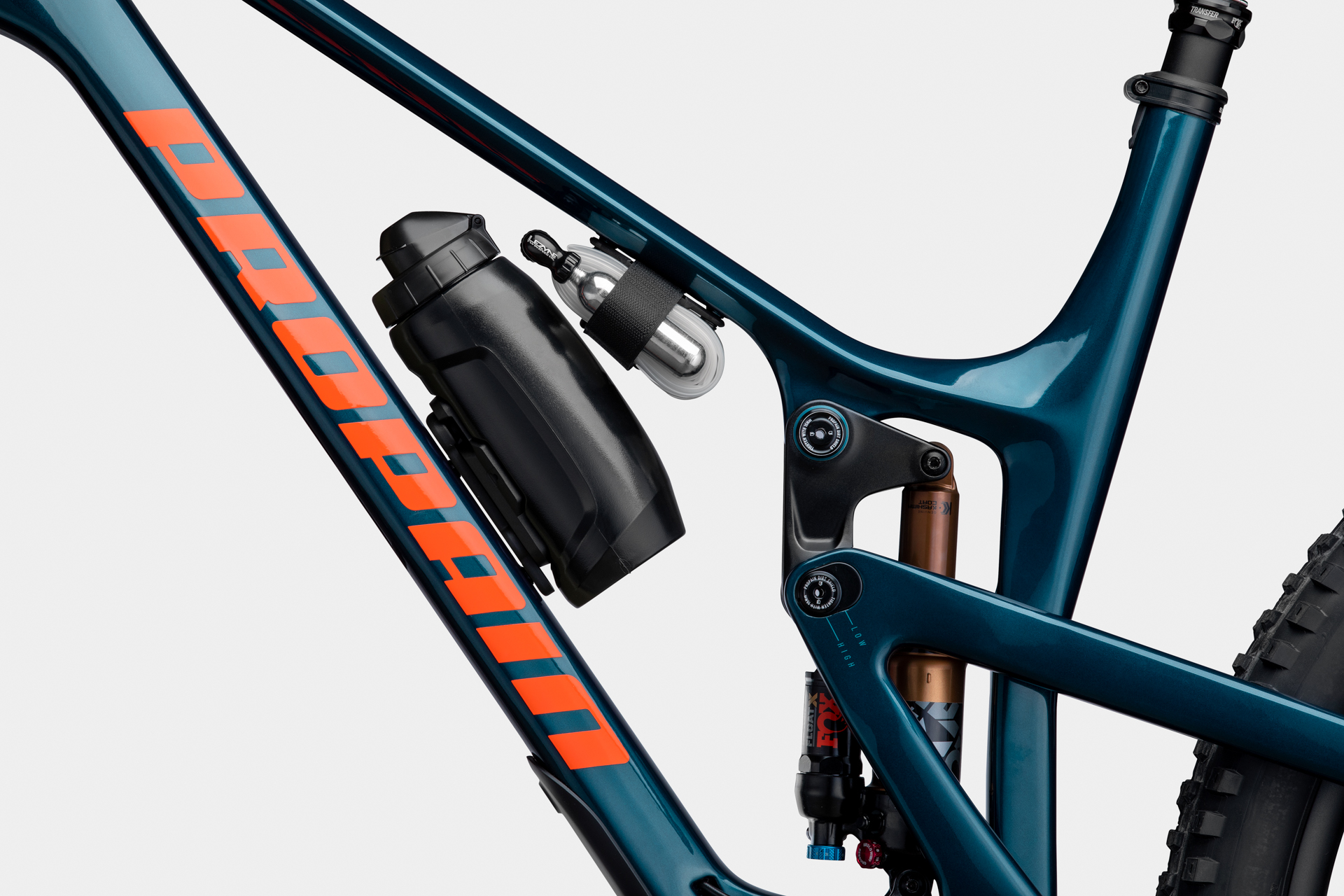
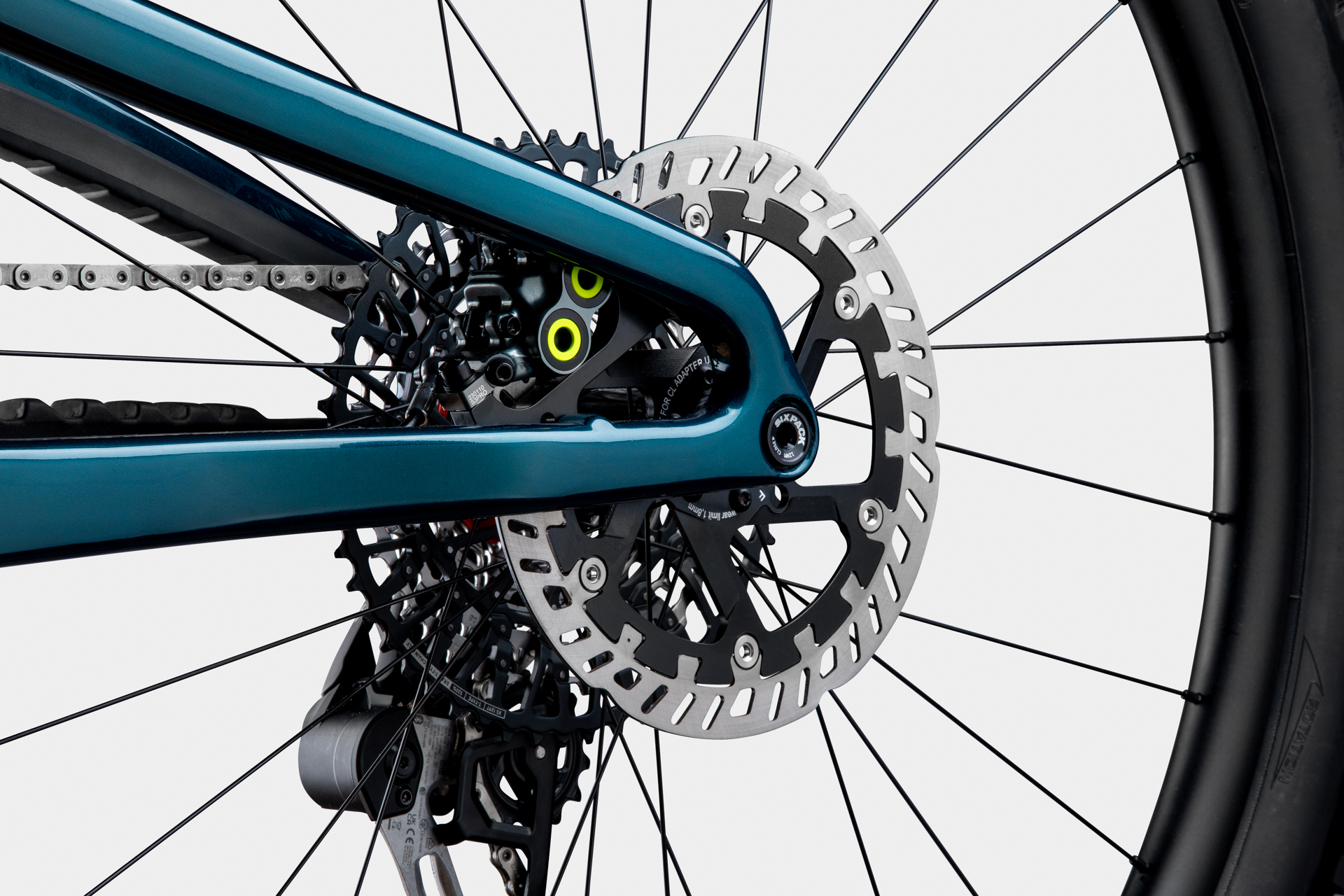
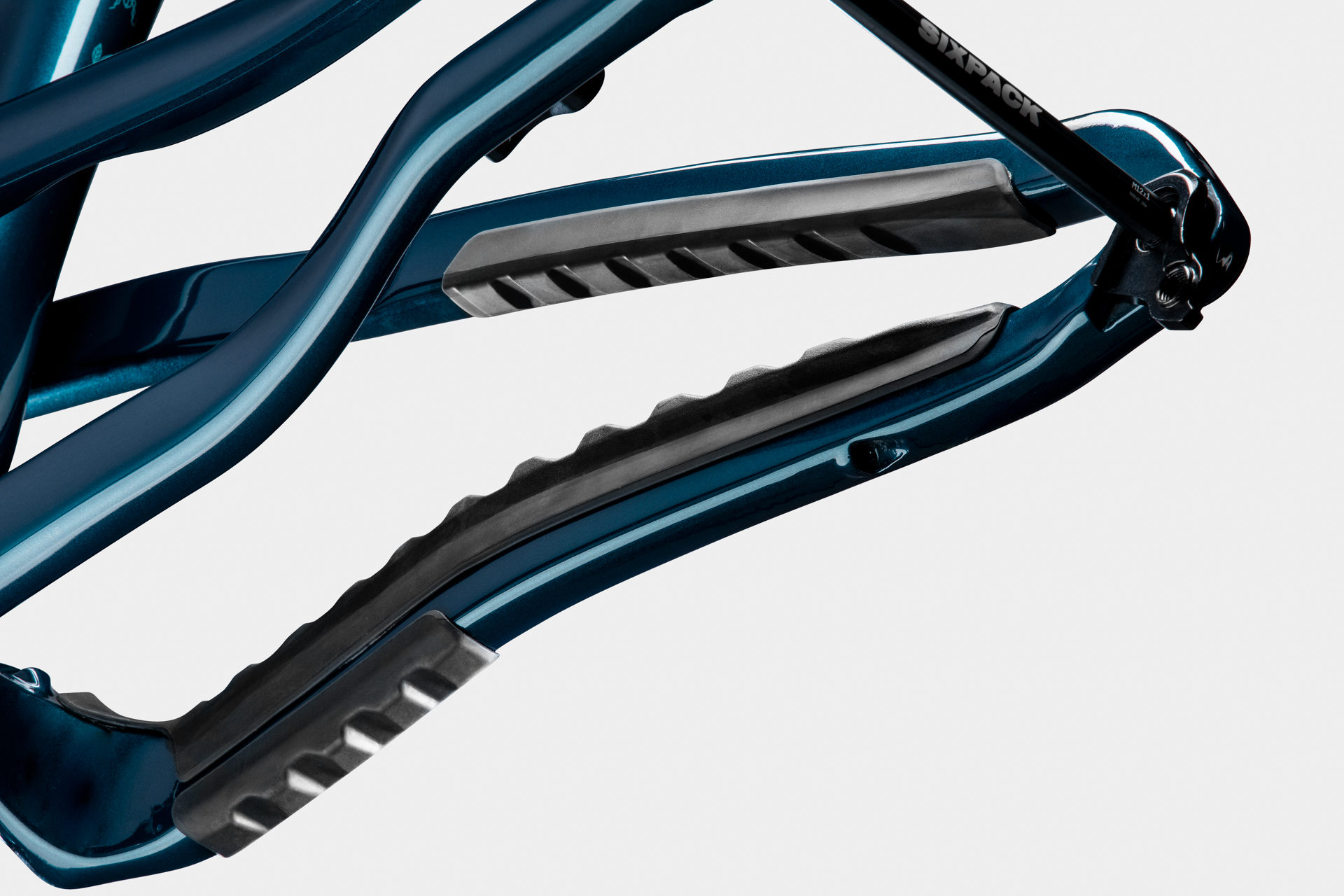
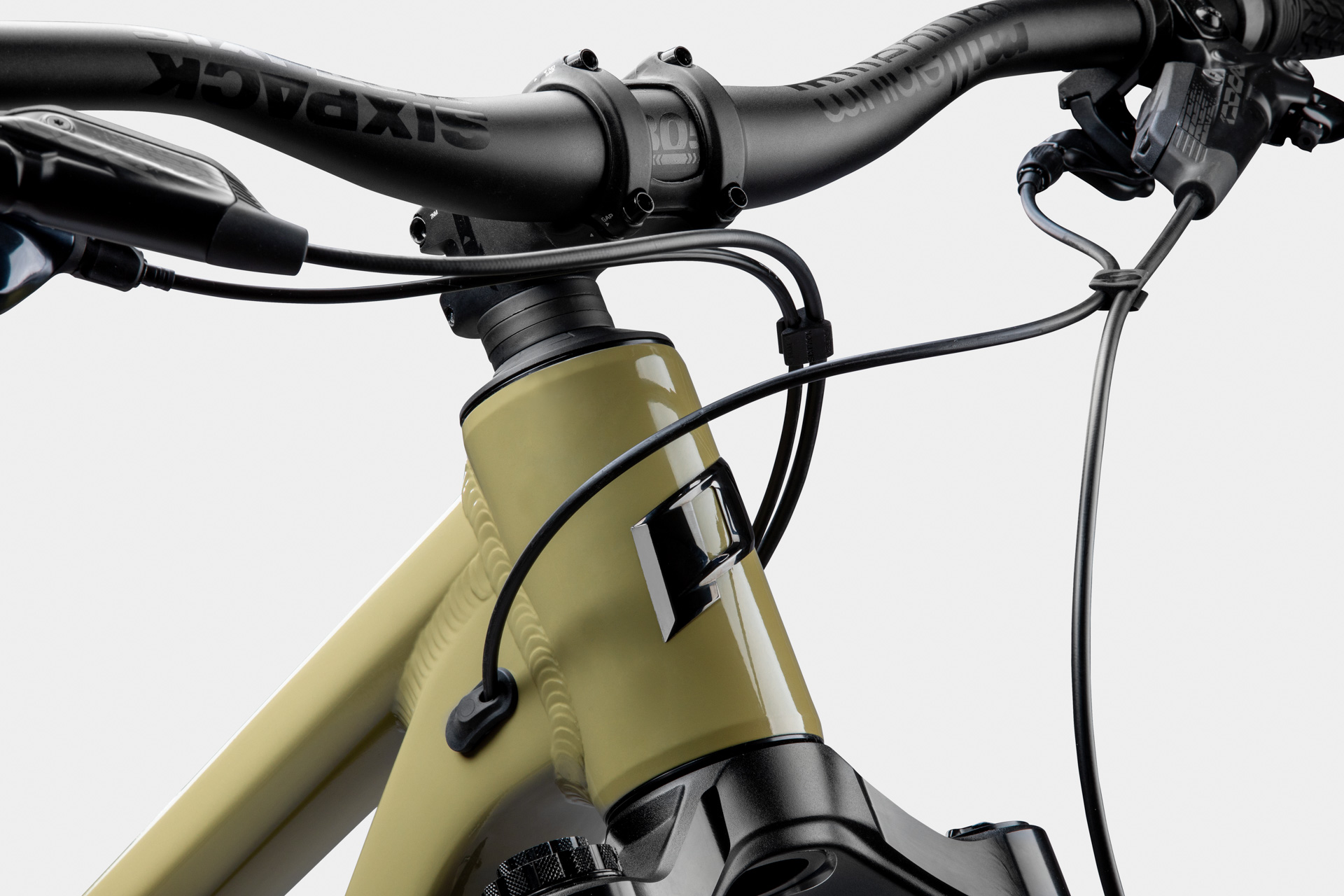
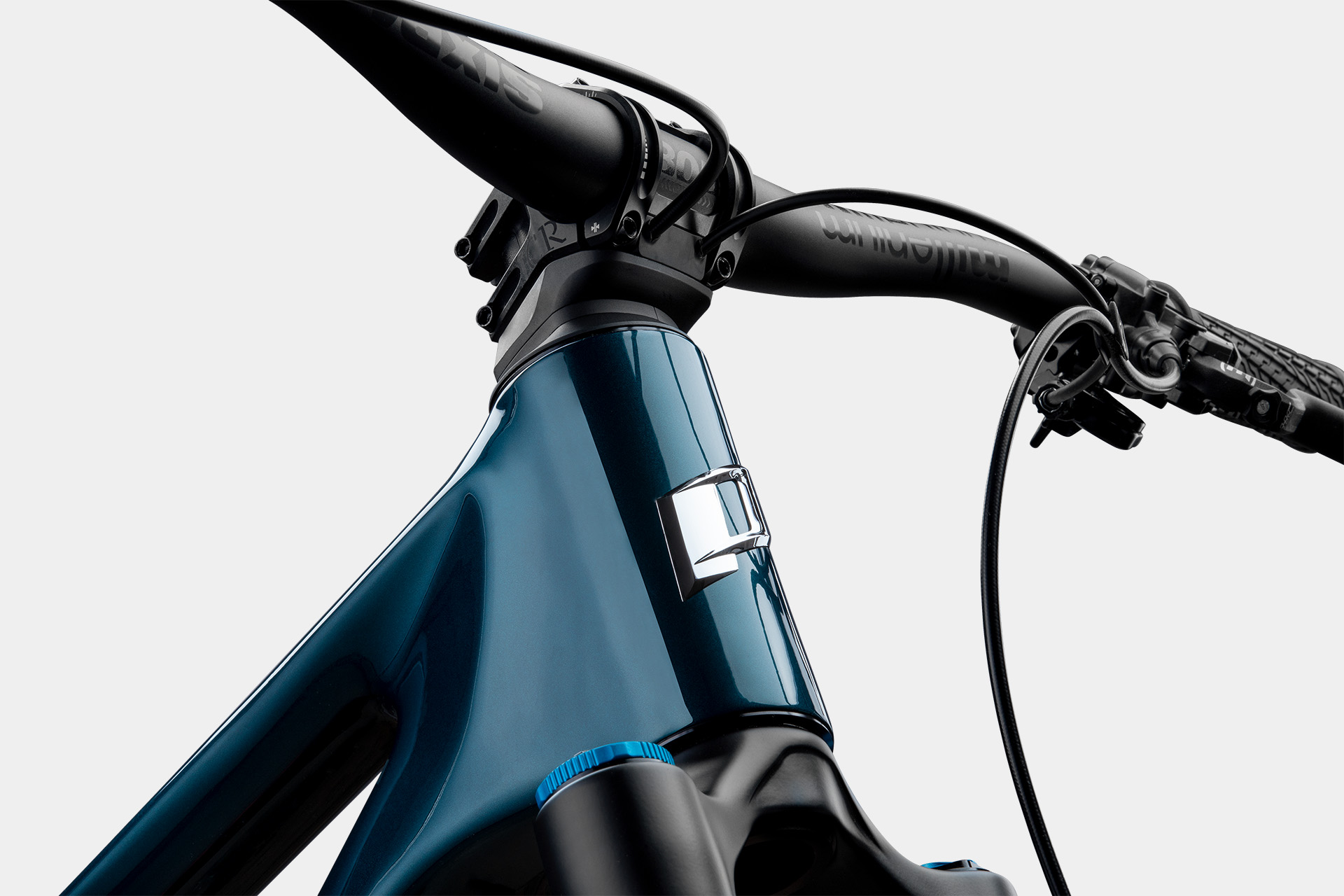
We hinted about the internal cable routing in the introduction, and want to be clear that we will withhold judgment until we have a Tyee in our hands for testing. So, for now, just the facts: Propain is utilizing an Acros ICR headset which is designed for internal headset routing. They have partnered with Sixpack and designed a CNC machined stem that integrates with the Acros composite top spacer. What all this means is that the cables travel through the spacer under the stem, which frees up the stem to be moved up or down, without the hassle of removing all the cables for simple stem height adjustments. They will also be offering clip-in headset spacers that will allow for that adjustment without removing the stem. Not that removing a stem and swapping spacers has ever been difficult with normally routed cables, but we think we appreciate the effort. Another interesting tidbit is the Aluminum frames retain their frame cable ports, so internal headset routing or classic (into the frame ports) internal routing will be an option. Sadly, it looks like the carbon frames will not have this option.
The Tyee will sport three color options for each frame material, with the downtube “Propain” decal and the headtube badge having separate color customization options. Propain has added tool storage mounting under the top tube, and there will continue to be one water bottle mount on the downtube. Acros stainless steel bearings are used throughout, a detail riders in wet climates will appreciate. Frame protection looks well thought out, and they’ve strived to reduce noise with soft air-filled plastic on the chainstay. Propain has adopted SRAM’s UDH derailleur hanger, and some of the higher-end builds will include SRAM’s new Transmission.
Fit & Geometry
Propain has added an Extra Small size for the Tyee, with both the XS and Small only offered in a dedicated 27.5” wheel configuration. No mullets or 29ers for short riders. On one hand, there are undoubtedly some shorter riders who’d prefer a bigger wheel or two and will be disappointed by the lack of the option on the Tyee. On the other, smaller 27.5’’ wheels do make a good bit of sense for smaller folks for packaging reasons, especially on longer-travel bikes where tire-to-butt clearance and stack height both become more significant limitations, so it’s cool to see Propain offering a full 27.5’’ bike for folks who’d appreciate that — there are plenty of options with bigger wheels out there.
No matter the wheel size configuration, the Tyee includes a geometry-adjusting flip chip. On the 27.5’’ frames, it serves as a geometry adjustment, only. On the 29er, it’s primarily intended to give the option of running either a 27.5’’ or 29’’ rear wheel, with the low position recommended for the 29er configuration and the high one to compensate for a smaller rear wheel. Propain also recommends running the Tyee with either a 160 or 170 mm travel fork, which introduces a few more options for geometry settings. Interestingly, Propain has also included a geometry chart for mixed wheel size in the low position (the 29er position), and as you can imagine, that slackens things accordingly. For the absolute slackest configuration, choosing a build with a 170 mm fork, while running a 27.5” rear wheel in the low position, returns a 63.2º (size Large) head angle — properly slack indeed.
Running the recommended flip chip settings on the 29er frame produces the same geometry for the 29’’ and MX configurations. All sizes get a 64.5º head angle, a seat tube angle around 77.5º (varies slightly by size), and reach on the Large comes in at 480 mm — all very common numbers in this travel range. Chainstays are a short 430 mm on the dedicated 27.5’’ bikes and grow to 445 mm on the mixed / 29er bikes.
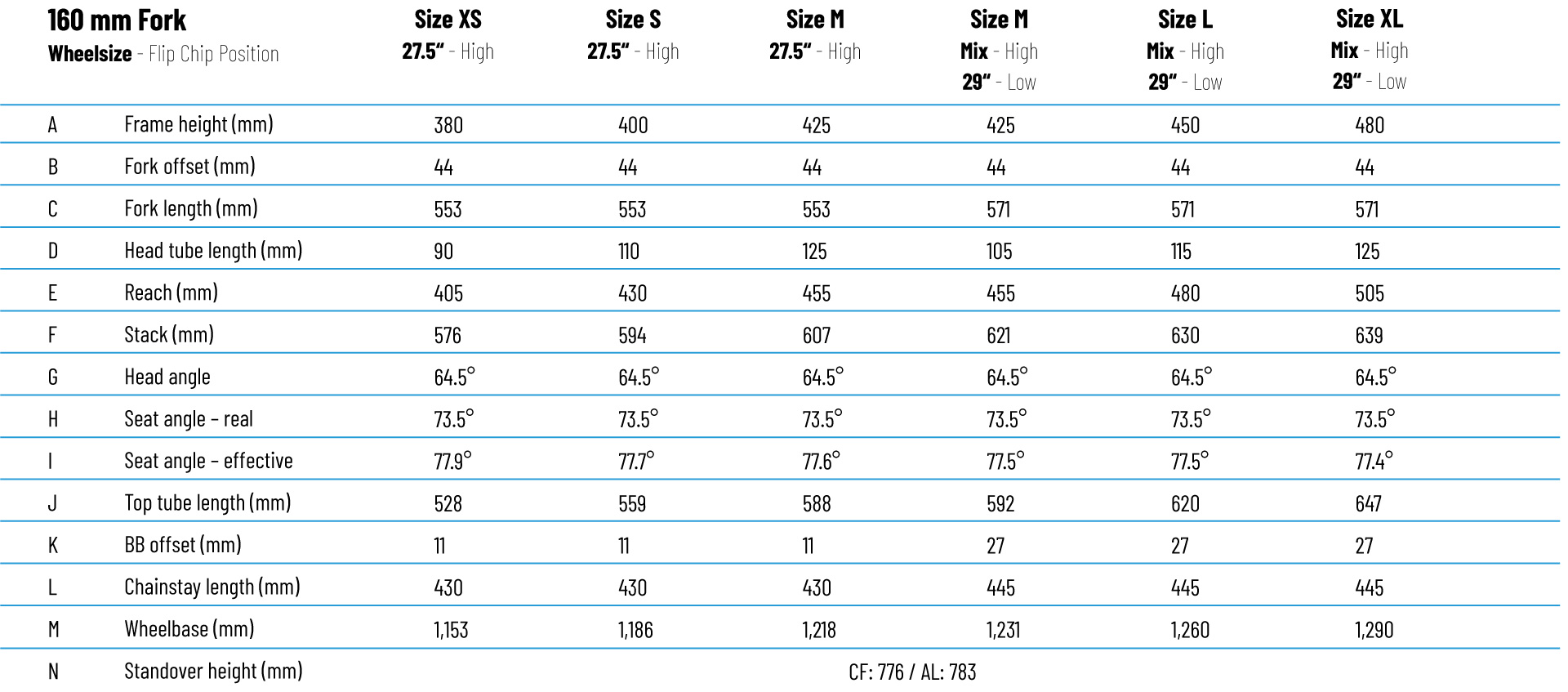
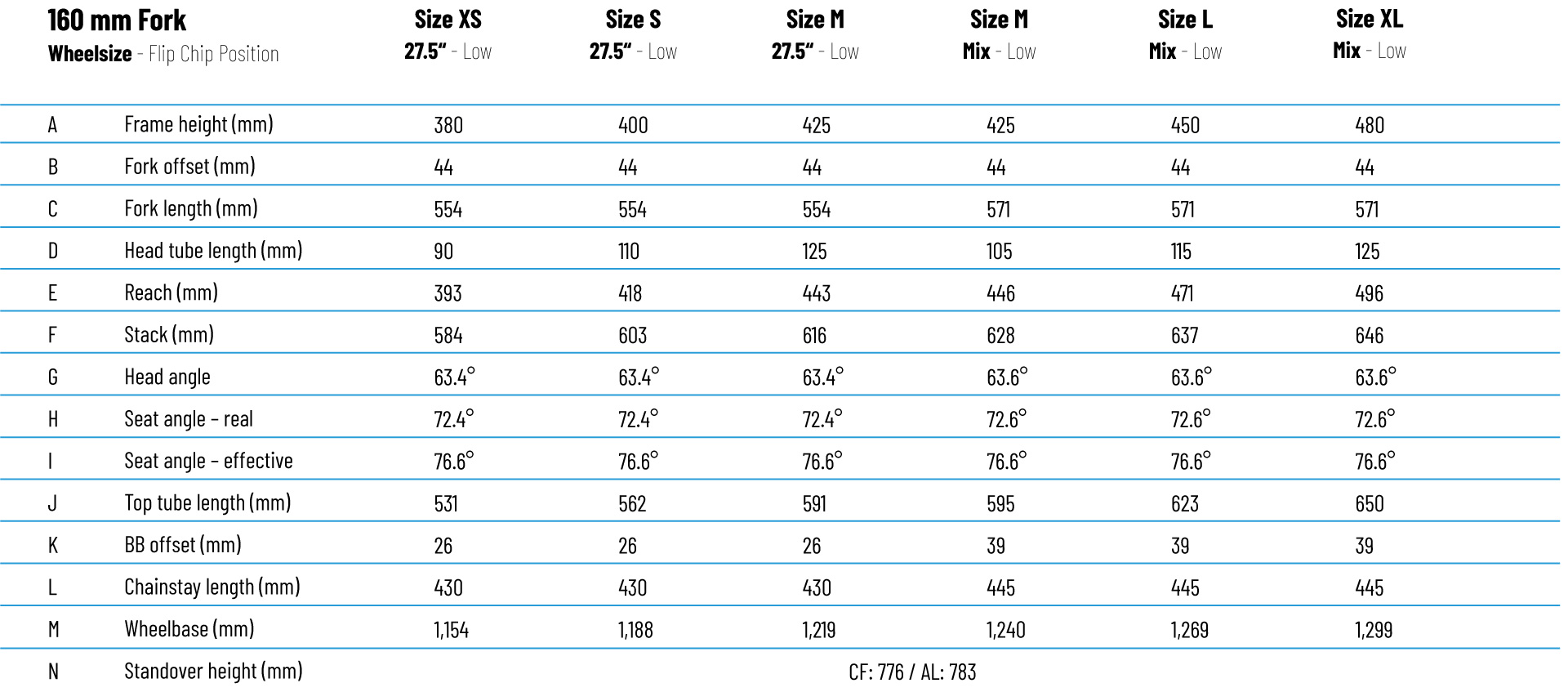
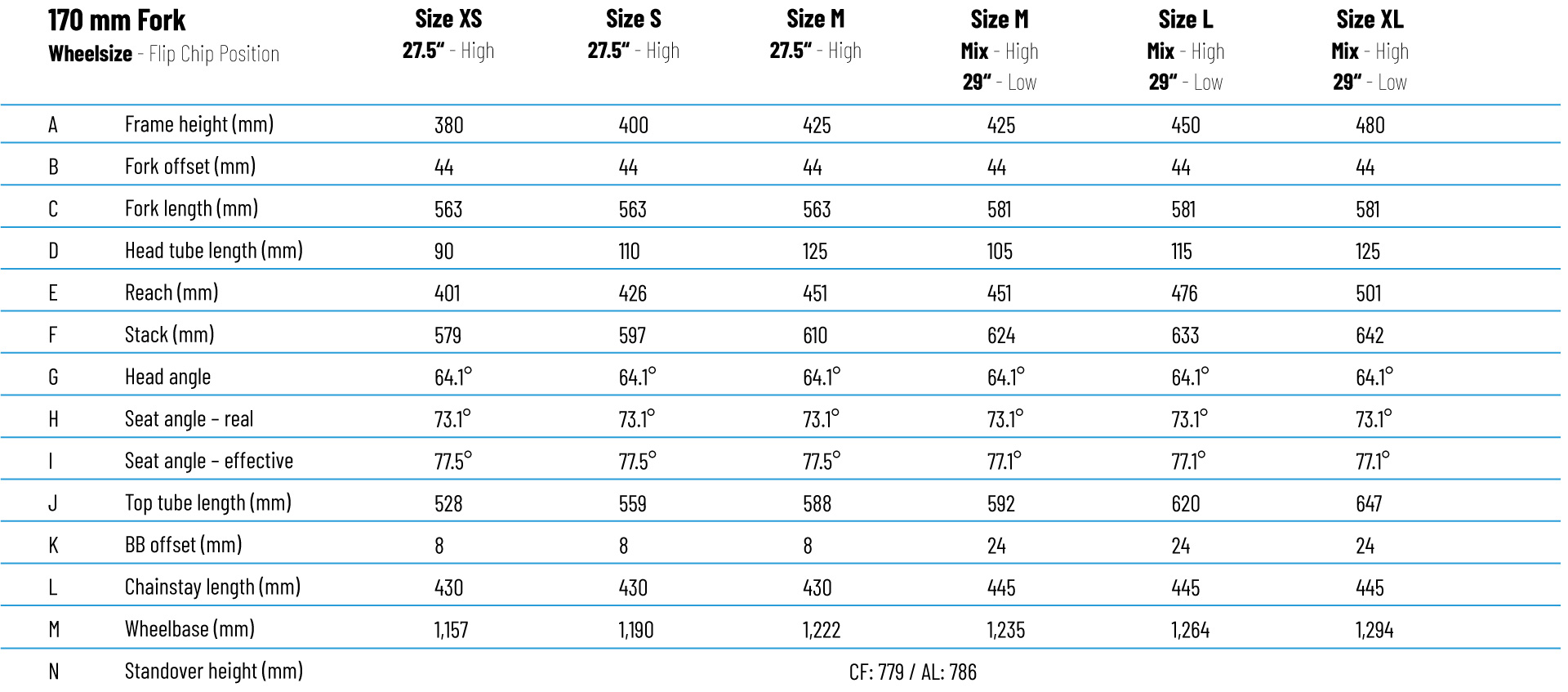

The Builds
Propain offers four builds on the Tyee, with additional options for customization through their online builder tool. The first two builds look to be positioned as a bit more downhill-focused, both coming spec’d with 170 mm travel forks and coil shocks. Moving up to the Phantom and Goldrush builds, the fork travel drops to 160 mm and the coil shocks get replaced with air shocks, indicating perhaps a more versatile Enduro focus. Pricing across the board looks to be quite competitive in the direct-to-consumer market, particularly the top-of-the-line carbon Phantom build featuring SRAM’s XX Transmission, Fox Factory 36 and Float X suspension, Magura MT7 brakes, and Crankbrothers Synthesis carbon wheels for a solid $8,244. With that said, the carbon Phantom build gets our pick, as it’s a very compelling package at $6,709 — the combination of RockShox Ultimate suspension with SRAM’s XO Transmission, plus a RockShox AXS seatpost, is an extremely impressive value. All four builds are available on either the aluminum or carbon fiber frame — a really nice touch — with the carbon frame commanding a $600 premium.

- Drivetrain: SRAM GX Eagle
- Brakes: Formula Cura 4 with 203 mm rotors
- Fork: Formula Selva S 170 mm
- Shock: Formula MOD
- Wheels: NEWMEN Performance 30
- Dropper Post: BikeYoke Devine
- Fox 36 Factory, Fox Float X Factory, Fox Transfer Factory Upgrade: $900
- Drivetrain: SRAM GX Eagle
- Brakes: SRAM Code R with 200 mm rotors
- Fork: RockShox ZEB Ultimate 170 mm
- Shock: RockShox Super Deluxe Coil Ultimate
- Wheels: NEWMEN Evolution E.G.30
- Dropper Post: BikeYoke Revive
- Drivetrain: SRAM XO Eagle Transmission
- Brakes: SRAM Code RSC with 200 mm rotors
- Fork: RockShox Lyrik Ultimate 160 mm
- Shock: RockShox Super Deluxe Ultimate
- Wheels: NEWMEN Evolution SL A.30
- Dropper Post: RockShox Reverb AXS
- Drivetrain: SRAM XX Eagle Transmission
- Brakes: Magura MT7 Performance with 203 mm rotors
- Fork: Fox 36 Factory 160 mm
- Shock: Fox Float X Factory
- Wheels: Crankbrothers Synthesis Enduro Carbon i9
- Dropper Post: Fox Transfer Factory
Propain will be launching an expanded custom configurator at some point in the future. The new configurator will include options such as handlebar rise and stem length, with the aim of helping dial in the fit. None of the builds call out seatpost travel, but we expect that to be an option in the configurator — we’ve reached out to Propain for clarification.
Some Questions / Things We’re Curious About
(1) How does the PRO10 suspension platform perform?
(2) How cleanly does the wheel size toggling on the larger sizes work out, and how much does changing the rear wheel size change the character of the Tyee?
(3) Has Propain indeed pulled off internal headset cable routing as well as they say?
FULL REVIEW
Propain has been expanding their North American presence for a few years now, and have been offering some of the more impressive bang-for-buck build specs out there. So we were curious — how do their frames stack up, and how does their interesting-looking Pro10 suspension perform on the trail?
It’s taken us a while to get on one, but I’ve now spent the last three months logging a lot of time on the latest sixth-generation Propain Tyee. It’s proven to be an interesting take on a 160mm-travel Enduro bike that could work really well for the right folks — but it also has a few quirks.
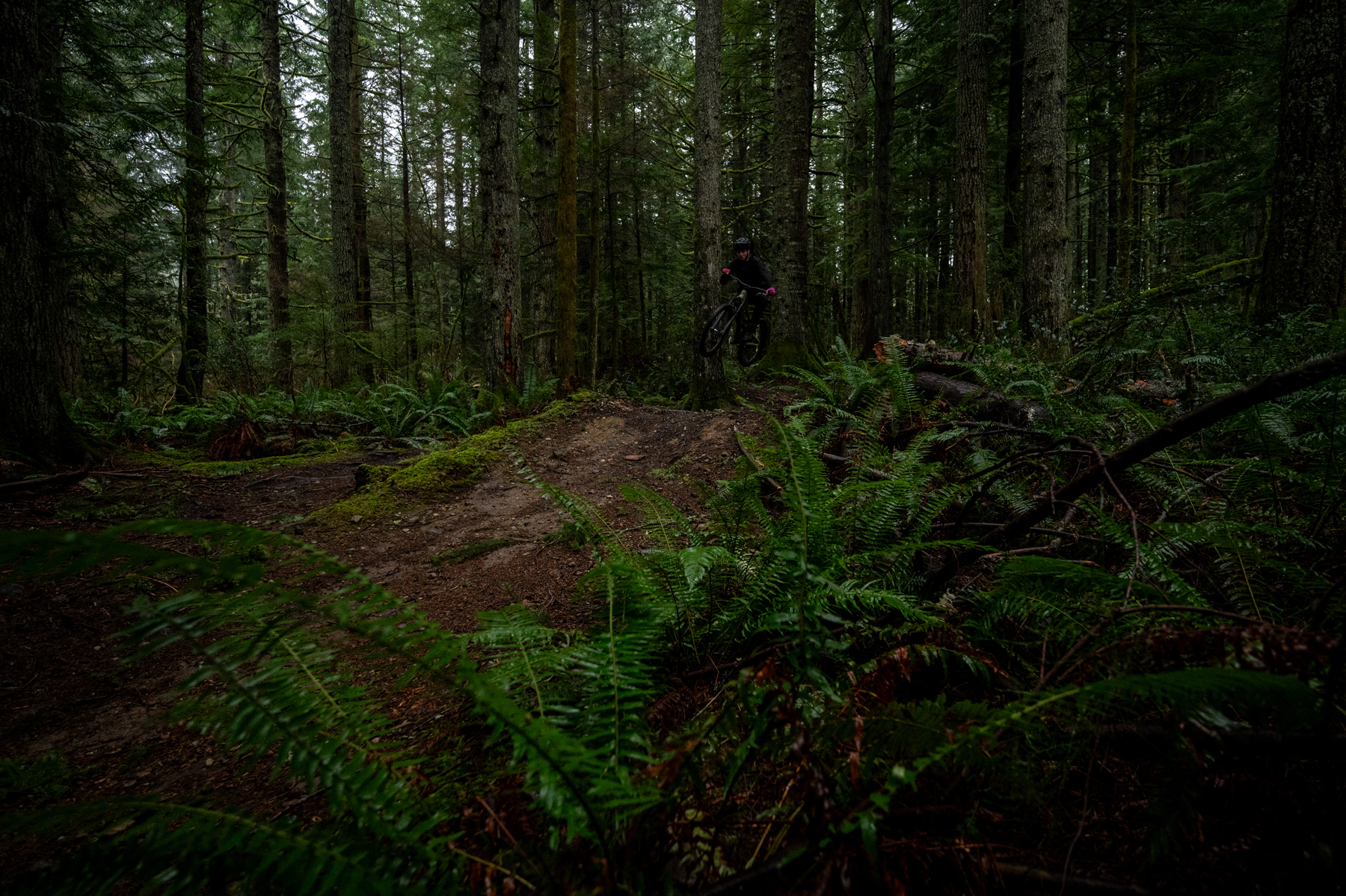
Fit & Sizing
Propain’s recommended sizing for the Tyee puts me (6’ / 183 cm) pretty squarely on the size Large with maybe a fringe possibility of enjoying the XL if I really wanted to maximize stability and composure at speed. After my time with the Large, that seems about right.
The Large Tyee felt maybe just slightly more compact than I’d personally call 100% ideal for my exact preferences, but (1) I’m being pretty damn picky there and (2) I wasn’t the least bit tempted to size up to the XL. That’s mostly because the Tyee feels like a more playful, nimble sort of Enduro bike, rather than an ultra-stable, planted one, and reigning in the sizing a touch felt like it played to those strengths well.
In general, Propain’s recommended sizing seems pretty sensible, and my general inclination is that, if you find yourself thinking that you really want to size up on the Tyee due to its geometry numbers, you might be better off with a bike that’s more stable and planted in general. Conversely, if you’re into the idea of an Enduro bike that works well with a slightly more compact fit to accentuate a relatively nimble, poppy feel for that class of bikes, the Tyee might be right up your alley.
Climbing
The Tyee’s pedaling performance feels well-rounded and typical for the class of ~160mm-travel Enduro bikes as a whole. (See our Deep Dive comparisons for more specific comparisons to lots of other bikes in this class.)
While it’s not the absolute most efficient pedaling bike in that class, the Tyee is a little better than average for those sorts of bikes, and does a good job of maintaining traction and compliance under power. The pedaling position feels well-suited to the Tyee’s overall demeanor — upright enough to make it easy to keep the front wheel planted, but with a moderate enough seat tube angle that it’s comfortable to pedal on flat ground and still feels like a versatile all-rounder from that standpoint.
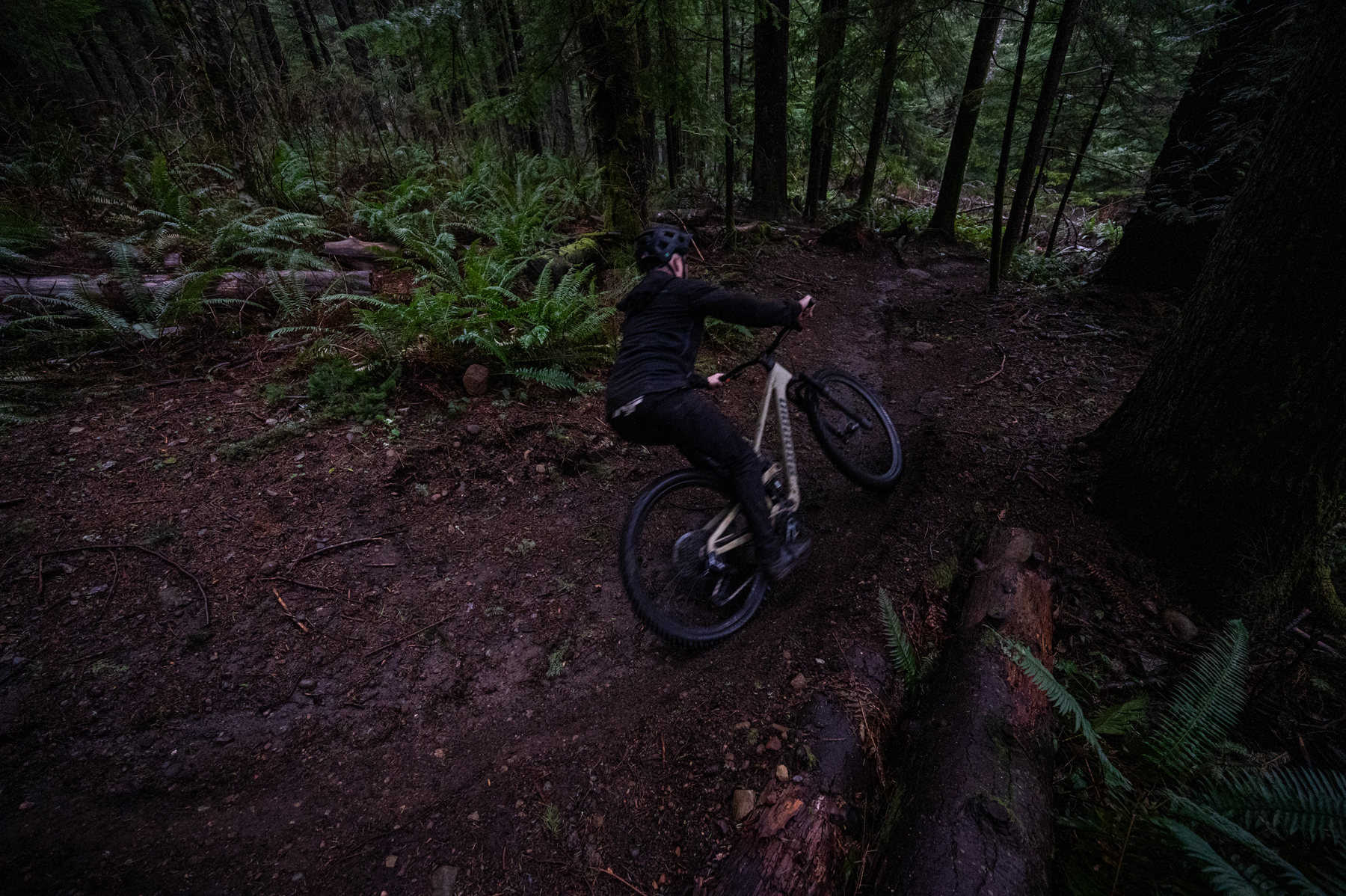
I quite like the seated pedaling position on the Large Tyee, and that’s probably the biggest reason I wasn’t at least a little tempted to try sizing up to the XL. The Large Tyee felt like the right size a lot of the time but felt a little small in a few situations on the way back down (more on that in a minute). But I think that the seated pedaling position would feel pretty stretched out on the bigger bike.
The 620 mm effective top tube length on our Large review bike (when configured with a 170mm-travel fork) is at the slightly shorter end of my normal preferred range, but the 27 mm jump up to the XL sounds like a bit much, especially given that I wound up preferring to run the Tyee with a longer-than-average 50 mm stem for handling reasons (more on that below, too.)
As 160mm-travel Enduro bikes go, the Tyee is a pretty good technical climber. Per usual for that sort of bike, the Tyee’s extra wheelbase (compared to most shorter-travel Trail bikes) makes it a little more work to wrestle through really tight spots and over ledge-y moves, but the Tyee isn’t too much of a handful there, and its better-than-average traction under power helps keep the Tyee motoring forward.
The climb switch on the RockShox Super Deluxe Ultimate rear shocks (we tried both the air and coil versions) does a fair bit to firm up the Tyee’s pedaling performance and make it feel snappier when you start mashing on the pedals. However, that switch is tough to reach on the move, given its placement down low in the frame just above the lower link. Doing so is doable, but requires reaching down pretty far and takes some careful timing and quick movements in between pedal strokes to make happen.
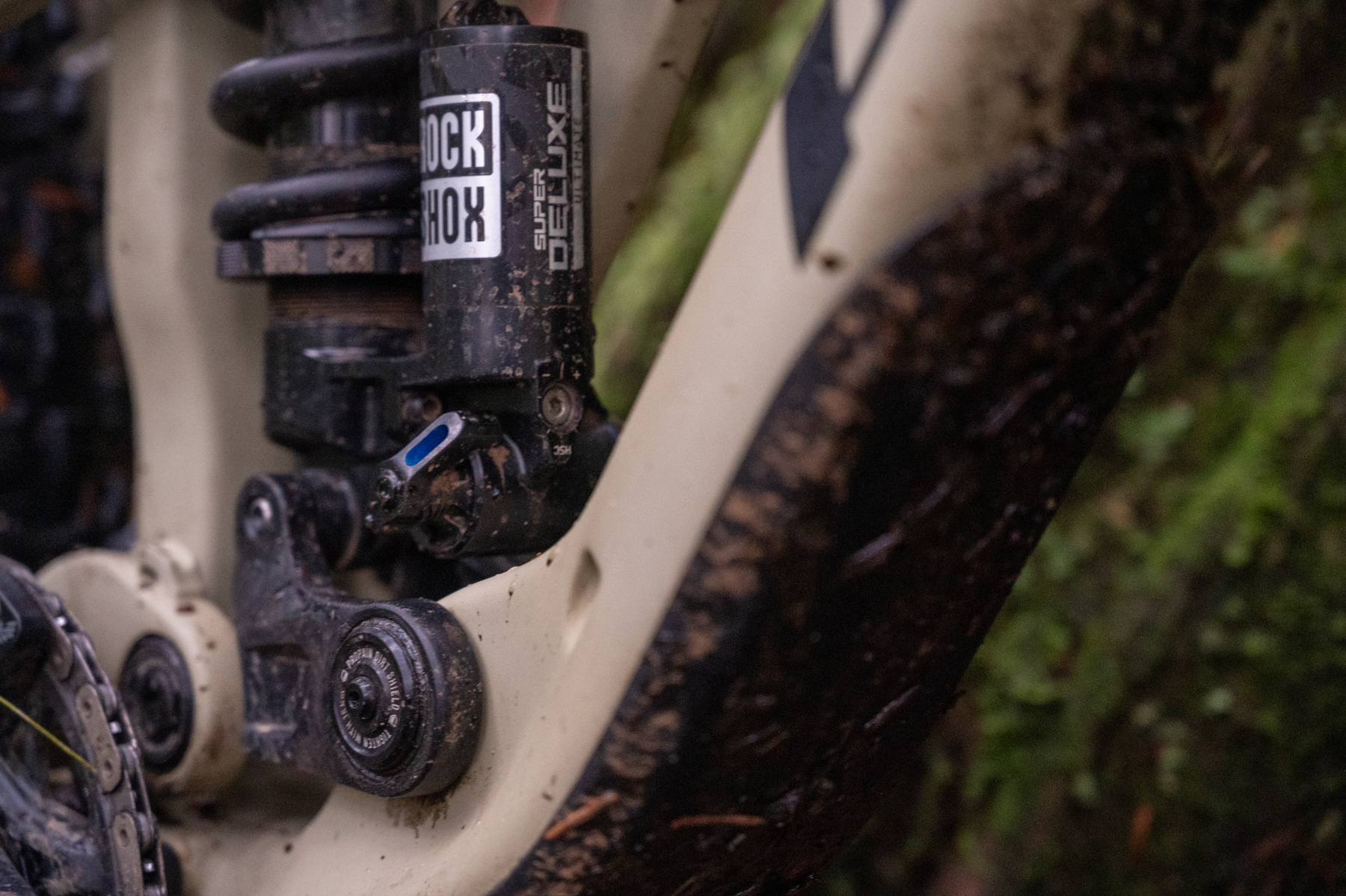
All told, the Tyee’s climbing performance feels very respectable for a 160mm-travel Enduro bike and its balance of solid efficiency and good traction under power seem likely to work for a lot of folks who have realistic expectations for how a 160mm-travel bike can pedal. It’s well-rounded, easy to get along with, and generally feels pretty normal for a 160mm-travel bike.
Descending
The Tyee’s solid all-round performance and versatile demeanor continue when you point it back down the hill. It’s still a pretty big, composed bike when considering the whole market, but as ~160mm-travel Enduro bikes go, it shades a bit toward the more nimble, playful end of the spectrum.
The Tyee’s handling is quite intuitive and just a touch quicker feeling than a lot of the ultra-stable game-on bikes in that class. The Tyee is a lot more fun and engaging than those sorts of bikes when you’re not going flat out, while still having a substantial top end for when you do want to push yourself and the bike. (Again, check out our Deep Dive comparisons for more specific comparisons to lots of other bikes in this class.)
I’m sure the sizing plays a little bit of a role there. As discussed above, I think the Large frame was the right size for me (6’ / 183 cm tall) overall, but I’m much closer to sizing up to the XL than I am inclined to go down to the Medium. I also think this is a case where opting for a slightly more compact than average fit is a good choice to match the overall characteristics of the Tyee, rather than being the main thing that drove its ride feel.

I got along especially well with the Tyee on trails that had some flow and a bit of variety, rather than terrain that was just relentlessly steep and fast. The Tyee also jumps very well, combining notably good pop and liveliness for a 160mm-travel bike with a well-balanced feel in the air, and a fairly forgiving platform to land on.
When things got especially steep, rough, and fast, I did find myself wishing for a slightly more stable, composed feel at times. A slightly roomier fit would, I think, help create some more room to move around on the bike and keep it from getting hung up in big holes and compressions quite as easily, but that fit would also almost certainly detract from some of the Tyee’s playful, lively demeanor that I liked the rest of the time.
The Tyee’s suspension performance also feels well-matched to the rest of the bike. It’s not the most planted and composed when carrying speed in really rough terrain, but it does feel more lively and energetic than most bikes that are better at simply bulldozing whatever’s in front of them. That’s not to say that the Tyee feels undergunned as a true Enduro bike. It’s just that modern Enduro bikes now cover a fairly wide spectrum, and the Tyee sits on the less ultra-planted and composed end of that range. And the things that the Tyee gains in exchange for a bit of high-speed composure feel in proportion to what it gives up on that front; it all comes together as a cohesive, harmonious whole.
I also found the Tyee to be pretty neutral and intuitive in terms of its handling manners and preferred body positioning. It’s got a fairly large sweet spot when you are moving around on the bike (especially for a bike where I could at least imagine moving up to the next larger size), and it doesn’t feel super demanding of being ridden either notably forward or especially upright and centered.
I would have loved to have been able to run a stem in between the 35 and 50 mm options that were available; the 35 mm one made the steering feel floppy, per usual, and the 50 mm one felt a little more sluggish than I’d ideally prefer. But I was overall much happier with the 50 mm option, and the headset cable routing made it tough to go to an intermediate length.

Propain sent over the Tyee with a mixed-wheel-size configuration, but I also swapped in a 29’’ rear wheel for a good portion of our testing. The swap was fairly straightforward, with the flip chip on the Tyee’s swingarm handling the geometry change, and I frankly didn’t notice a huge difference in the Tyee’s handling between the two. That difference was notably less significant than some other convertible bikes I’ve been on recently.
The fact that the Tyee’s geometry doesn’t change much between the two wheel settings probably has a lot to do with it — some bikes get a significant change in chainstay length when you toggle — but everything I’ve laid out about the Tyee’s ride characteristics applies to both setups. The full 29er Tyee is a tiny bit more stable, while the smaller 27.5’’ rear wheel makes the handling slightly quicker (and opens up some more butt-to-tire clearance, of course), but those differences are modest.
The Build
The various stock Tyee builds are quite good values for money, and Propain’s configurator allows for a nice array of customization options. Our review bike is essentially the stock “Phantom” build, but with a 170mm-travel RockShox ZEB Ultimate fork swapped in, instead of the stock 160mm-travel Lyrik Ultimate.
I happened to have a 160mm-travel Lyrik on hand during our testing period, so I swapped that on for a couple of rides and don’t have super strong preferences about the two fork options for the Tyee. The extra length of the 170 mm ZEB raised the stack height a tiny bit, which I liked, and made the bike a tiny bit more stable. The shorter Lyrik made the bike a tiny bit quicker handling and saved a little weight, but neither difference was dramatic by any stretch.
The Tyee also generally worked well with both the air and coil versions of the RockShox Super Deluxe that Propain sent over with the bike. That said, I had a clearer preference there, with the coil version’s improved midstroke support and composure through the middle of the travel feeling like a worthwhile tradeoff for the extra weight. The hydraulic bottom-out adjuster on the coil version is hard to access with how the shock is mounted on the Tyee, but that should be pretty set-and-forget for most folks.
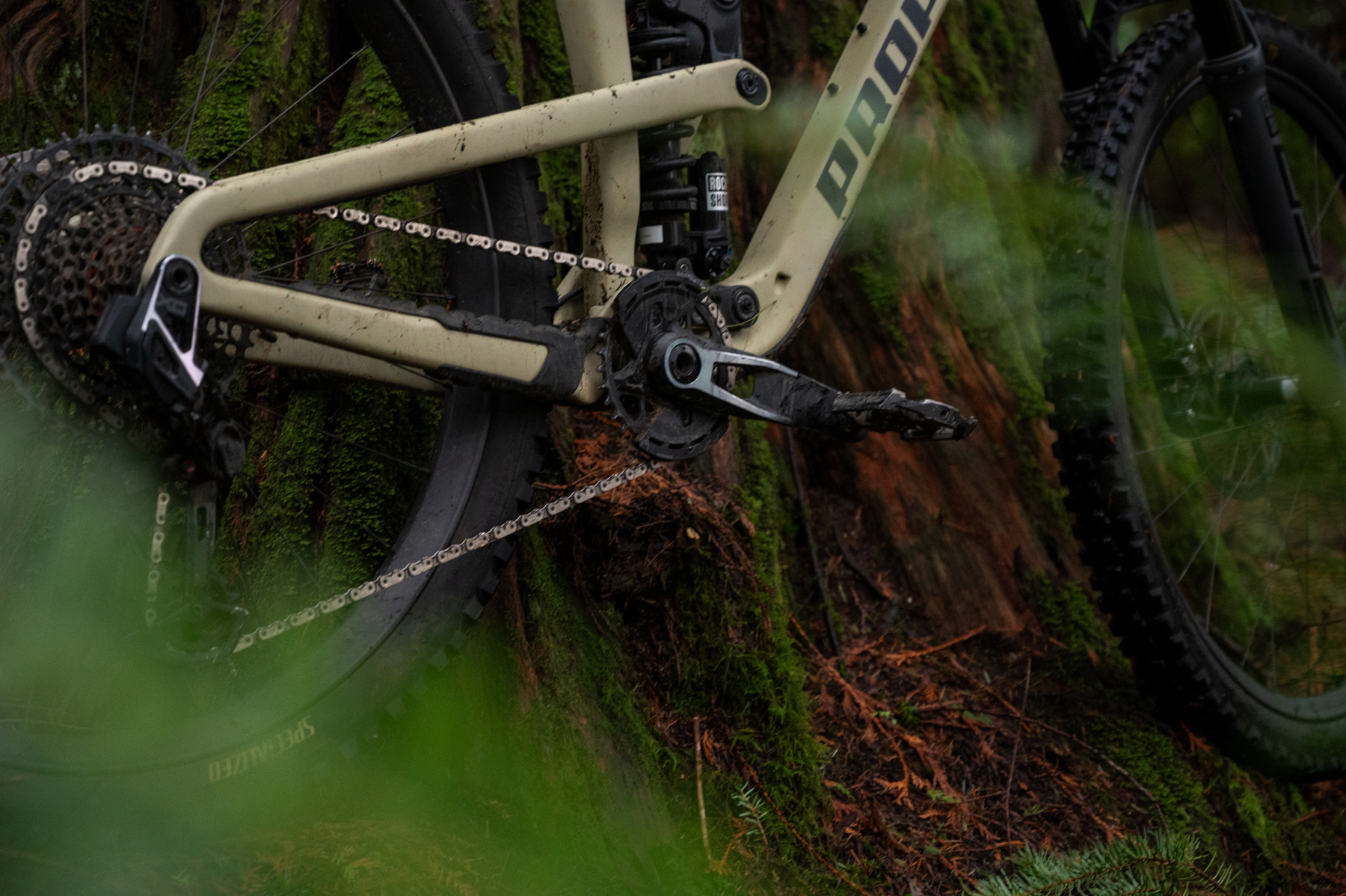
It is worth pointing out that the 210 x 55 mm stroke shock that Propain uses on the Tyee is on the shorter side for a 160mm-travel bike. I don’t think it’ll be an issue for most folks (and the tune on both versions of the Super Deluxe felt well suited to the bike), but it does mean that the Tyee will require a bit higher spring rate (or shock air pressure) than a lot of other bikes. That might start to be a limiting factor for some heavier riders, but also might be welcome for some lighter ones. I wound up running a 550 lb spring on the coil version of the shock, and 255 psi in the air one — both higher than I do on most bikes, but not that close to their upper limits of 700 lb and 360 psi, respectively.
I swapped out the stock RockShox Reverb AXS dropper post after a handful of rides, because I wanted more drop than the 170 mm that it offers. I was (just) able to squeeze in a 200mm-drop PNW Components Rainer, but the Tyee’s seat tube is slightly on the long side, and its insertion depth isn’t great, so some folks may be a bit limited there. Propain has a variety of options for different seatposts available in their build configurator, but just take care to pick one that’ll work for your seat height.
Now it’s time to discuss one of the elephants in the bike industry’s proverbial room: headset cable routing. Regular Bikes & Big Ideas listeners are well aware of my thoughts on headset cable routing at this point, but I want to take a minute here to reiterate why I don’t like it. If you don’t feel like reading a probably-too-long rant on the subject, feel free to skip this part.
(1) It makes for more work when routing the cables while building a bike, swapping parts, or doing maintenance. I’ll grant that this is a bigger deal for me, a bike reviewer who’s constantly assembling bikes and swapping parts for testing purposes than it is for the average consumer, but it’s still annoying. If you pay someone else to do your bike maintenance, you’ll likely be paying more for the extra hassle, and the next time your upper headset bearing needs replacing, now you’ll need to bleed your rear brake, too.

(2) It also makes cable length far more critical. Once again, this is probably not that big a deal for a lot of people, but if, for example, you want to share a bike with a partner or lend one to a friend from time to time, you’ll have less leeway to move the seat height up and down with a cable-actuated dropper. Routing cables requires more care to get the lengths dialed, and installing cable-actuated droppers is annoying because there may not be enough housing length (between the exit ports on the headset and the remote) to slide the housing into the frame far enough to reach the seatpost-end of the housing with the remote still installed.
(3) My biggest gripe is that it makes for more proprietary parts. The Tyee comes with a Sixpack ICR stem, which is only offered in 35 and 50 mm lengths, both for 35mm-clamp bars. I prefer a stem in between those lengths on most bikes, and a 31.8 mm bar. On most bikes, I can just swap on that combo in a matter of 10 minutes. But with the Sixpack ICR setup, the stem is part of the collector for the cables, so you can’t just swap whatever you want on there. It also uses proprietary headset spacers, which only work below the stem. So if you want to swap things around for setup purposes, you need both the special below-stem spacers and some normal ones to go above it, rather than just moving the spacers up and down on the steerer tube.
[There is a standard collector available that uses normal stems, but installing it requires re-running the brake and any other cables that go through the headset, so it’s not a straightforward job. If, like me, you’d rather go that route, you’ll get it pre-installed if you skip the ICR stem in the configurator. And again, the aluminum version of the Tyee has ports for standard internal cable routing as well; the carbon version we tested does not.]
Given the choice between a 35 mm stem or a 50 mm one, I definitely prefer the steering feel of the longer option (which also makes the Tyee fit a little longer than it might with a shorter stem, and makes the Large more clearly the right size choice for me). But I’d really prefer a 45 or ideally a 40 mm one for the Goldilocks steering behavior, and that simply wasn’t on the menu.
Obviously, none of those issues are the end of the world, but they’re an accumulation of a whole bunch of minor annoyances for… what I don’t even see as a real aesthetic improvement. Propain has clearly paid attention to the details, including shipping a plastic steerer-tube protector on the Tyee (I’ve seen photos of headset-routed bikes where the cables had worn dangerously far into the steerer tube). Propane also spec’s a stainless steel Acros upper headset bearing to extend its life as long as possible, but that stuff all feels like bandaids to fix problems that don’t need to exist in the first place.
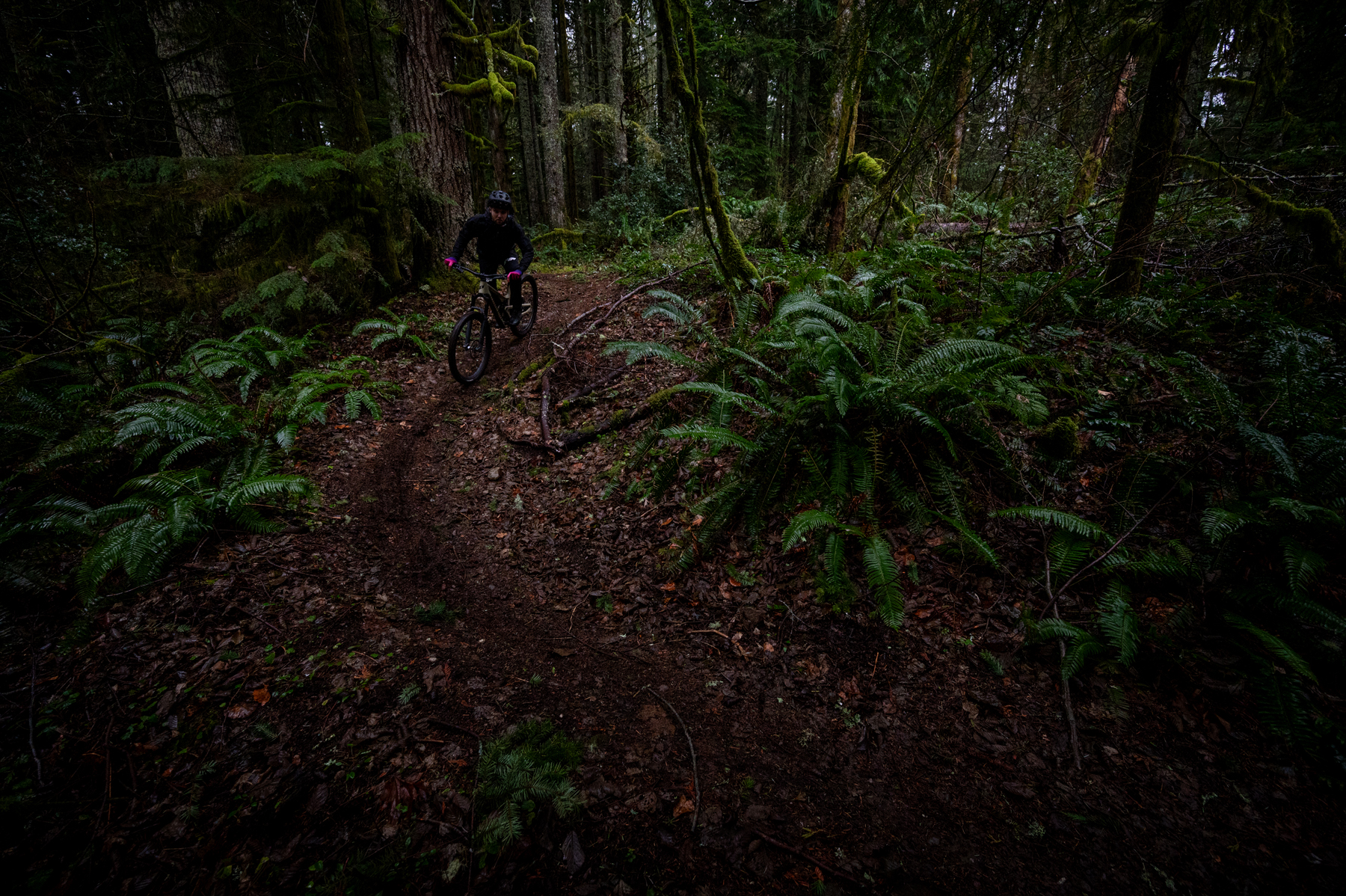
It’s also a minor thing (and certainly not a reason to avoid buying a Tyee), but the stock Sixpack grips use a T15 Torx for their clamp, which I discovered when one slipped on my first ride and my multi-tool didn’t have any way to deal with it. I understand not wanting to use small, easily stripped Allen heads, but spec’ing a fastener head that isn’t on the overwhelming majority of multi-tools is pretty annoying.
Who’s It For?
The Propain Tyee is a good option for folks who want a longer-travel bike that’s quite capable of tackling very steep, technical descents, but is a little more nimble, playful, and more engaging on mellower terrain than the very burliest, most game-on Enduro bikes out there. It’s intuitive and easy to get along with; the build specs are great values for the money; and those builds come with a wide range of customization options as well.
Bottom Line
The Propain Tyee is a notably versatile, fairly playful take on a 160mm-travel Enduro bike. It’s easy to imagine the Tyee working well for folks who want a more lively, nimble bike that’s more fun while jumping and goofing around than a lot of the more serious game-on Enduro race bikes in this travel class. The headset cable routing is unfortunate (though the aluminum frame has the option to forgo it) and the seatpost insertion could be better, but it’s well-sorted and cohesive overall.
Deep Dive Comparisons
BLISTER+ members and those who purchase our Digital Access Pass can check out our Deep Dive comparisons linked below. Get our Digital Access Pass to view all our Deep Dives and Flash Reviews, or become a BLISTER+ member today to get access to that and a LOT more, including the best worldwide Outdoor Injury Insurance, exclusive deals and discounts on skis, personalized gear recommendations from us, and much more.
Check out our Deep Dive comparisons of the Propain Tyee to see how it compares to the Kavenz VHP 16, SCOR 4060 LT, YT Capra, Santa Cruz Nomad, Santa Cruz Bronson, We Are One Arrival 152, Trek Slash, Trek Fuel EX, Starling Murmur Enduro, Orbea Rallon, Orbea Occam LT, REEB Steezl, Yeti SB160, and Pivot Firebird.

I counted roughly one million “lost me at headset cable routing” comments on PinkBike. I was surprised to see Propain have gone this route for cable routing, but I’m keeping an open mind. Otherwise, I think the updates are pretty cool and this shapes up to be a really dialed bike. I really dig the geometry. I’m curious what is the max size dropper post you can fit (I would ride an XL which is probably bigger than the size you have for testing). Also, is the new location of the rear brake caliper hard to access/work on?
All good questions. We don’t have one in yet (allegedly soon, but Propain’s track record of delivering on promised review bikes leaves a lot to be desired) so… we’ll just have to see.
The Tyee and the Rallon appear to have nearly identical geometry. Will be very interesting to see how they compare.
Hi David. Really good review. I’m impressed with your suspension conclusion. I have this bike from last autumn, with Super Deluxe and 500lbs coil for my 75kg weight. SAG looks good (25-30%), but the bike feels quite stiff! It is not as plush like I expected. My setup: HSC full open, LSC -1. Maybe this coil is too stiff? It’s good practice to add rider data, like weight and height for a review. It’s a good reference. What’s your weight?
For me it’s hard to believe that this bike is in “playful” spectrum of today bikes. My last bike was a lot more fun, agile and jumpy (NS Snabb 2017), I don’t even imagine how “stable” bikes feel, it sounds boring :)
Hey Marcin,
I weigh 170 lb / 77 kg. It’s listed up top, as in all of our reviews.